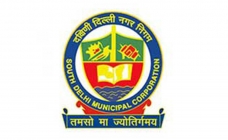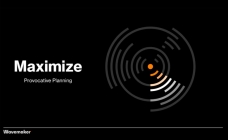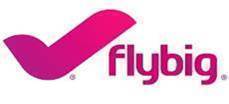India’s macro economic indicators show uptick for OOH
By M4G Bureau - February 11, 2021
The International Monetary Fund in its recent report projected an 11.5% growth rate for India’s economy in 2021, in its World Economic Outlook report. These and other reports project a positive outlook for the media and advertising industry as a whole, and for OOH in particular, writes Vishwanath Kini, Head – Growth & Strategy, NBD, The Brand Sigma
 As economy and markets have begun to reopen and reboot of industries is taking place, the new fiscal year is a time to re-write the Outdoor Advertising playbook. Let’s look at India’s broad macroeconomic indicator in the first place.
As economy and markets have begun to reopen and reboot of industries is taking place, the new fiscal year is a time to re-write the Outdoor Advertising playbook. Let’s look at India’s broad macroeconomic indicator in the first place.
The International Monetary Fund in its recent report projected an 11.5% growth rate for India’s economy in 2021, in its World Economic Outlook report for January. The body estimated that India’s economy contracted by 8% in 2020. The figure is a positive revision of its estimate in October 2020, when it had predicted that the growth rate will shrink by 10.3%. The IMF report suggested that India will be the only major economy to register a double-digit growth this year, followed by China, which is expected to grow by 8.1% in 2021. While Fitch Ratings estimate that India’s economy to grow at 9.5% next fiscal year.
While India could well be the fastest-growing Asian economy in calendar year 2021 (CY21) if Nomura’s forecasts are to be believed. The foreign research and brokerage house expects the Indian economy – as measured by gross domestic product (GDP) – to grow at 9.9 per cent in 2021, eclipsing China (2021 GDP growth pegged at 9 per cent) and Singapore (at 7.5 per cent) during this period. Nomura has turned positive on India's cyclical outlook for 2021, and believes the country is on the cusp of a cyclical recovery.
The above references suggest that India is in a bright spot at the moment. The things are changing for better. Market and consumer sentiments are turning positive and more importantly optimistic. The economic fundamentals and demand uptick seems to have started regaining the lost ground. These have strong bearing on media and advertising industry as a whole and outdoor advertising in particular.
This year’s Union Budget was closely looked at as a blueprint for India to get back on track as the world’s fastest-growing major economy. It is a definite relief to see budget looking to provide a long-term boost to the economy by focusing on areas like Infrastructure and Health. Even though there are no specific booster doses to the media and advertising industry in particular, proposals and provisions aimed at boosting BFSI, Real Estate, Automobile, SME / Start-ups which are driven by consumption would indirectly help the growth of the media and advertising industry. The 30-stock benchmark of the Bombay Stock Exchange is hovering around 50,000 mark while Nifty nears 15,000 mark. The government has relied on increasing government spending to boost the economy which reimagines India's self-reliance like never before and will drive the revival of the economy from the impact of the pandemic.
Outdoor advertising suffered a severe blow during the pandemic owing to drastic drop in ad spends owing to zero visibility. Almost the entire city was under the lockdown. However, marketers began to spend once the lockdown was eased. Festival at the fag end of the year 2020 saw encouraging ad spends from advertisers owing to the increased traffic mobility in public places and key consumer touch points. There are signs of confidence building measures that are being taken by the central and state government like allowing 100% cinema hall occupancy announcement, opening up of educational institutes in phases and resuming the Mumbai local trains for general public, states like Karnataka allowing shops and business establishments employing 10 or more people to remain open 24 hours with the aim of generating employment and accelerating economic growth, sporting authorities lifting the restrictions on spectators' management by allowing full capacity crowds at the stadium for outdoor events during the upcoming tournaments from which events like IPL could benefit etc etc. The return of sense of normalcy has been sent in motion.
Following the covid-19 pandemic, many of the Media and Entertainment industry’s reports have suggested a lag in outdoor spend in the recent times. The uptick in outdoor advertising activity suggests that reports need to review and revise their outlook /forecast not only for the sector but for the entire M&E industry. We @ TBS – RI Lab expect this to happen very soon.
At TBS-RI Lab, we expect the spending to accelerate; witness positive growth in terms of spends coming in, and consumer sentiments returning. If you go category-wise such as FMCG, Consumer Durables and Electronics, Automobile, Lifestyle, BFSI, Real Estate, Healthcare category there is positivity, and we expect spends from them. The resumption of normal outdoor advertising activity not only in the metros and Tier 1 cities but also in Upcountry markets (Tier 2, Tier 3 cities) is a telling sign that where the brands are going and where the growth is going to come from. Outdoor advertising firms have started hiring again points to the OOH advertising sector’s growing appetite for business again. The Brand Sigma itself is spreading its wings and is aggressively hiring highly competent professionals to run its profit centres in various cities.
Outdoor has set out to reclaim its lost sheen and shine. Shrugging off the disruptions of the year gone by, Outdoor advertising is looking for a strong revival in 2021 and beyond. As long as people are outdoor, OOH advertising is the go-to the market medium for advertisers. With the advent of DOOH, the current day technology led Outdoor advertising has found a new vigour. While this is good for the overall growth of the industry, traditional and static outdoor advertising options like billboard, unipole, bus shelter, gantry, cantilever wall wrap, FOB, pole kiosk, airport branding, mall branding, metro branding, tech park branding etc. will still command the value and volume share for the foreseeable future owing to the limitations of DOOH which cannot be present everywhere. The efficient DOOH Networks presence is limited to top 20-30 cities in India. It should be noted that India is home to 7,935 towns (Statutory 4041 + Census Towns 3894 as per census 2011), thus even if 30 cities are removed from the equation, still there are 7900+ towns where traditional outdoor media formats and medium holds the sway and are perfect medium to reach out to the target audience.

Stay on top of OOH media trends

-2_140_270.png)
-2_140_270.png)
-2_140_270.png)




